Imbibitional Chilling – Avoid Planting Into Cold Soils
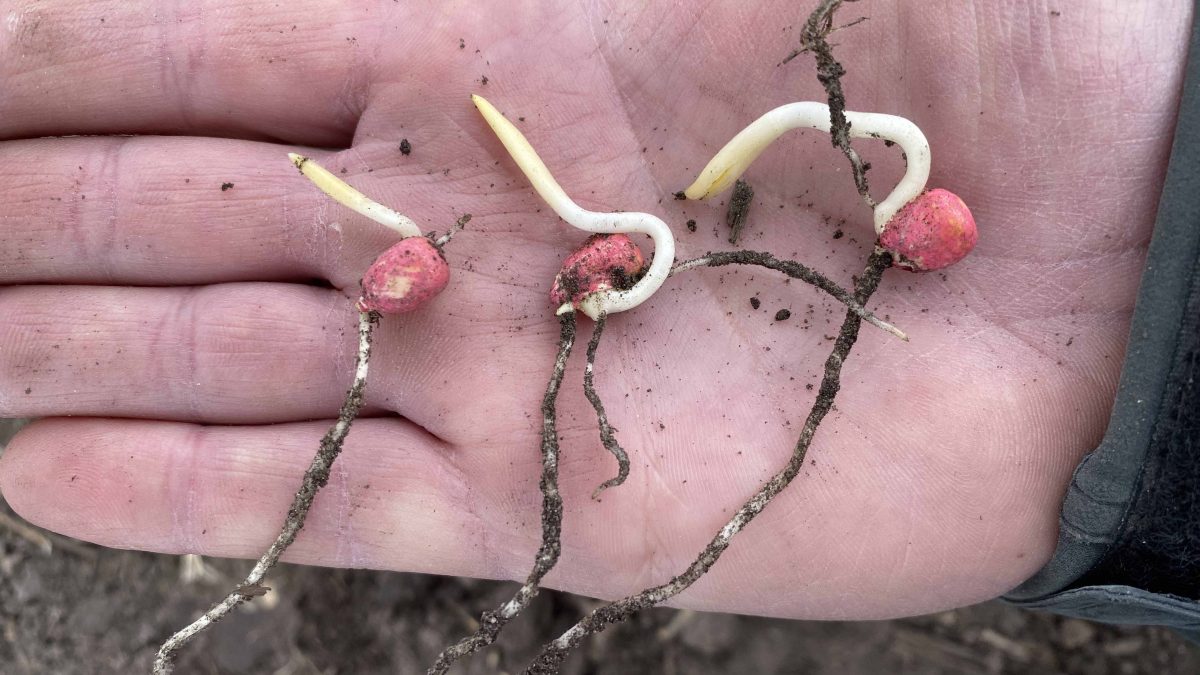
While it may not feel like it everywhere, spring is definitely on the way. Along with the excitement that comes with warming temps and melting snowbanks comes that spring planting itch. But going into spring preparations, don’t get too far ahead of yourself. Even as you watch your neighbors roll out to plant those first few acres, pump the brakes and examine your field conditions! This spring, we’re highlighting planting mistakes that can be prevented with just a little patience – saving both stand-loss and money. One of the sneakier corn-stand killers is imbibitional chilling.
When corn seed goes in the ground, the first thing it does is aggressively soak up or ‘imbibe’ water. Knowing this, many growers try to time some of their planting with an anticipated rain.
But, if your corn imbibes water under 50 degrees during the first 24 to 36 hours, the seedling is likely to be damaged or even killed.
You can avoid imbibitional chilling by taking a breath and waiting until the soils are at a stable 50 degrees for that first 24-to-36-hour window. If a rain is forecast during that window, you will want to monitor those temperatures to prevent cold shock.
If you get some temperature fluctuations or cold rain, we recommend walking the field and digging up a few seeds. Look for damaged tissue that is brown or mush (below).
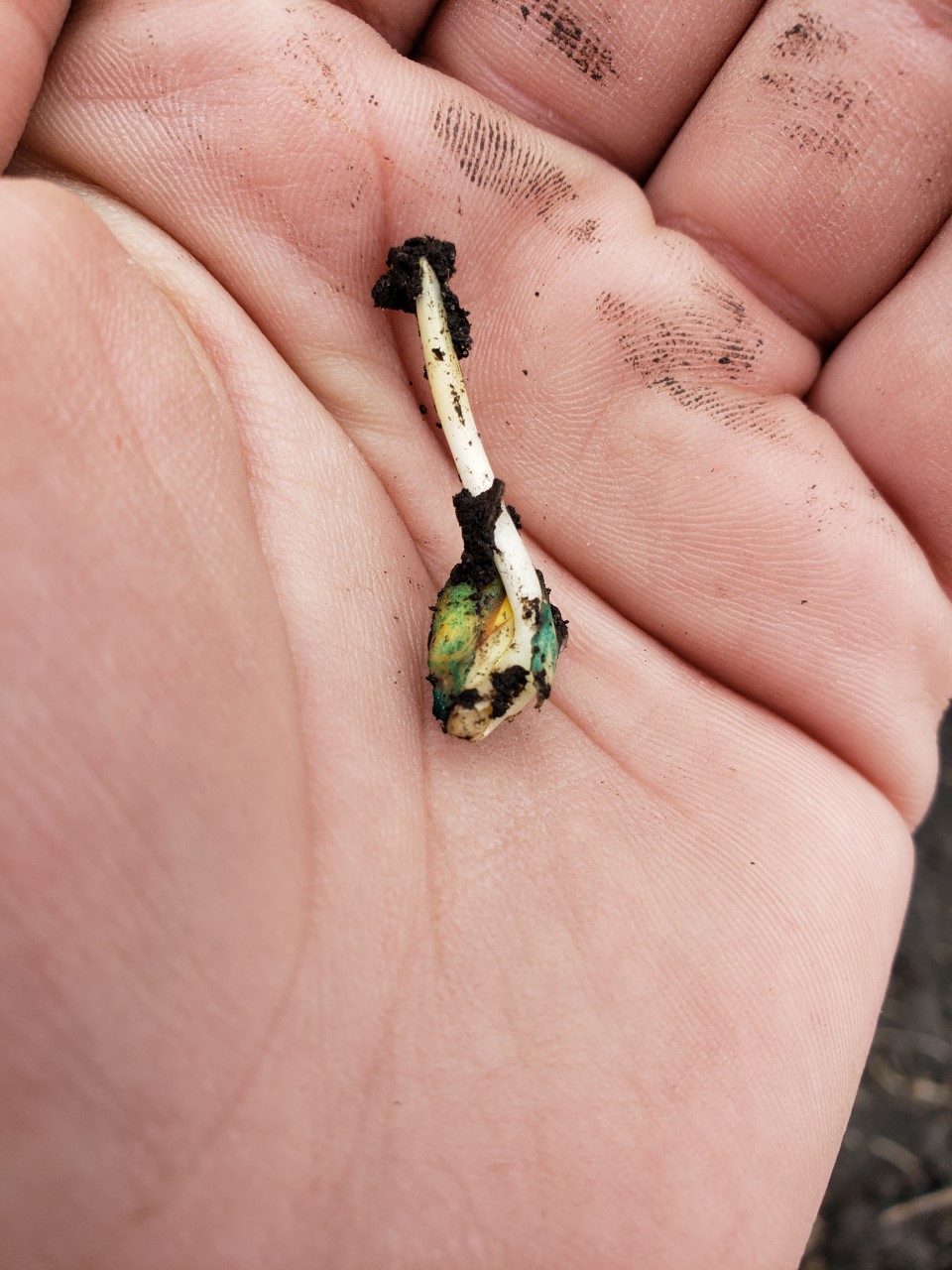
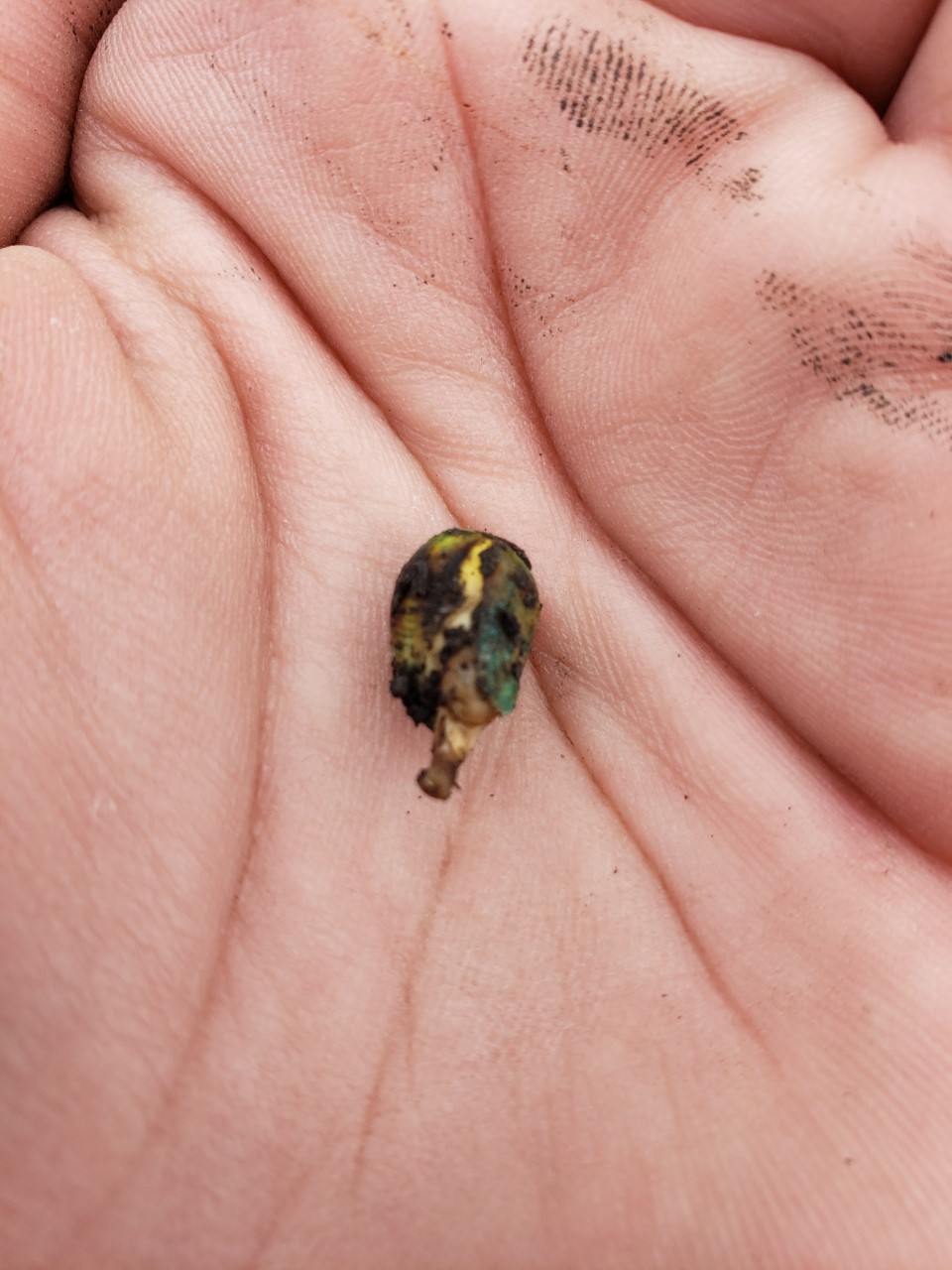
If either the shoot or radicle looks brown and dead, you should dig up a few more seeds from different areas in the field to assess the damage and consider a replant. Seedlings cannot recover from tissue death at this early stage. With the radicle killed, the seedling may still push out of the ground but will not be able to develop a root system. No root system means no food or water. The seedling might poke through the soil and green-up, but it will quickly run out of energy and wither.
Additionally, the shoot can grow abnormally, growing sideways, down, or in a corkscrew (below). Watch for these symptoms as a seedling only has so long to recover before it will die.
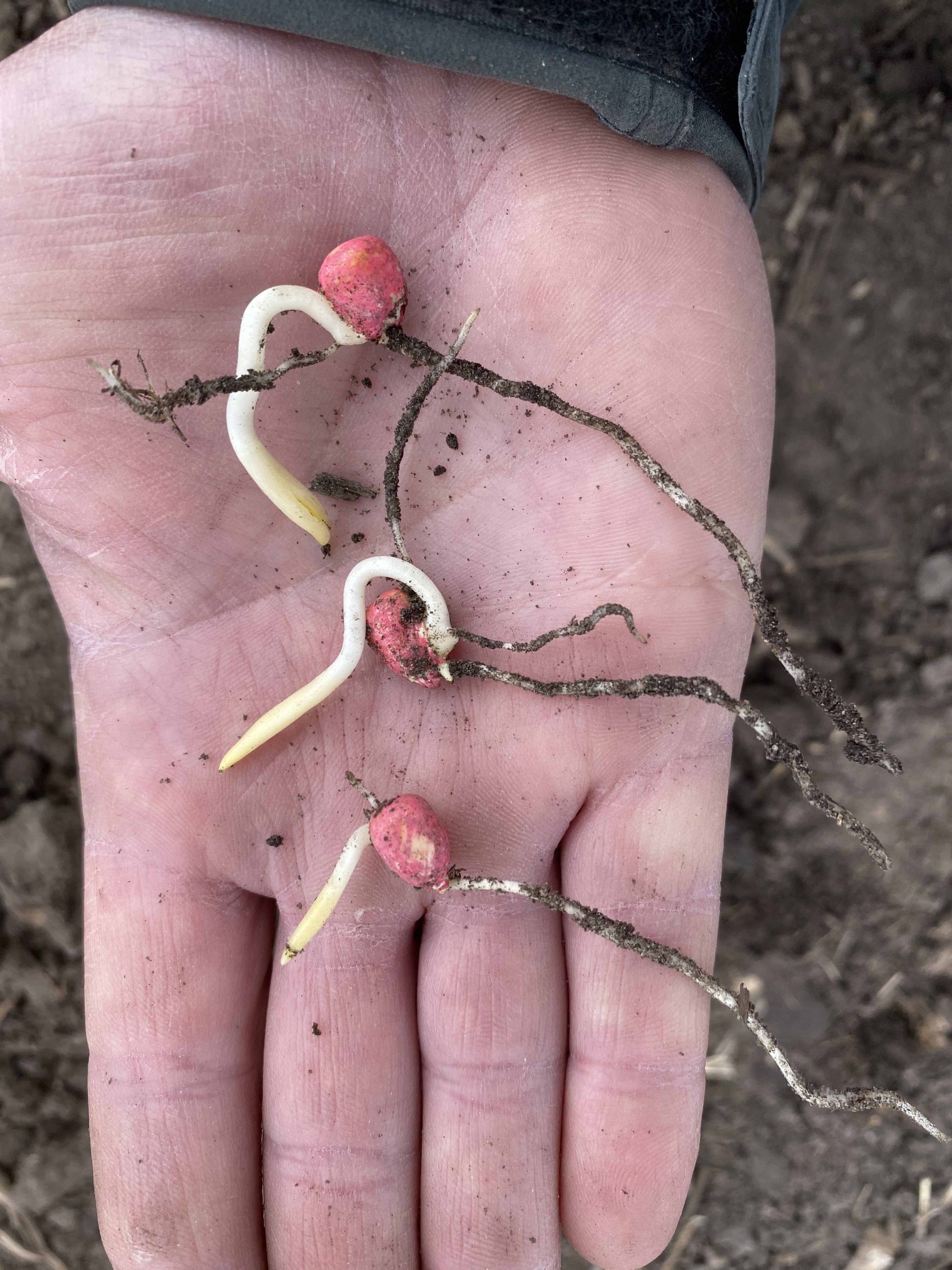
Every year we like to include a planting date study in the Ole & Sven plots and boy, did we ever learn a lesson past year about cold soils. We included five different planting dates over 43 days, spanning a 20-degree soil temperature range.
Check out the image below for more proof that it pays to wait to plant. Planted populations were all 34K. From the earliest date to the last, we had final stands of 6K, 23K, 27K, 32K, and 33K. Our example might be a bit dramatic, but it just shows that getting too antsy costs you real money.
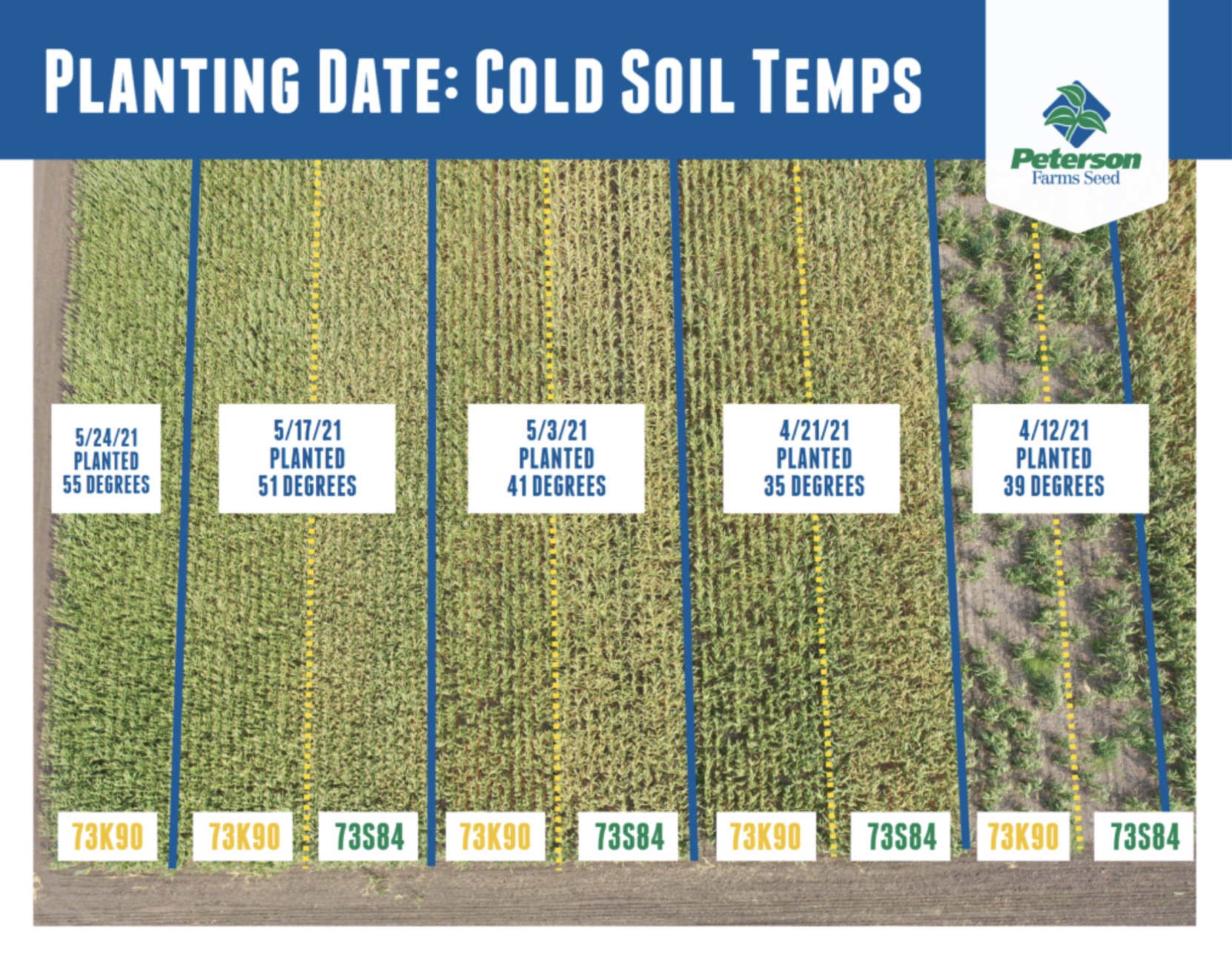
So this spring, when you are watching the neighbor roll by to muck things in, remember to take a breath and double-check your conditions. It pays to be patient and let the soil warm up.











